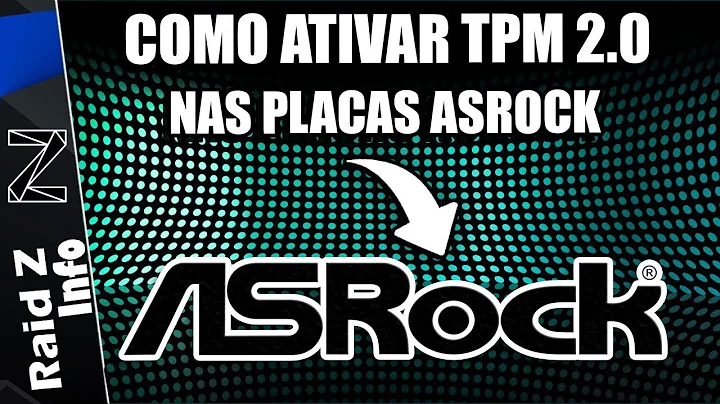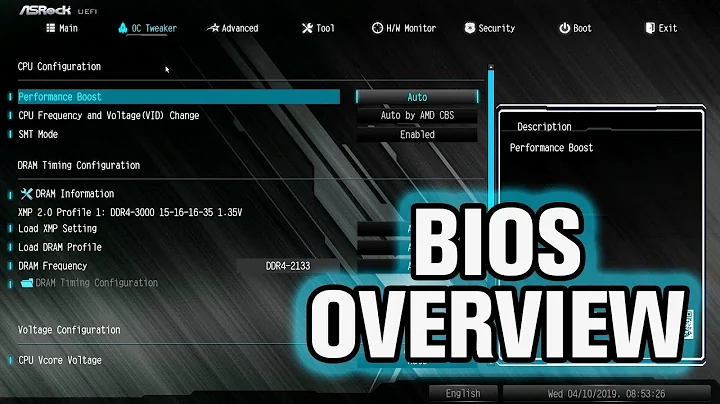Effortless Medical Model Training with NVIDIA Clara SDK
Table of Contents
- Introduction to NVIDIA Clara Train API
- Automated Medical Image Segmentation
- 2.1 Overview of Medical Imaging Model Development
- 2.2 Challenges in Image Segmentation
- 2.3 Clara Train's Automatic Marking Methods
- AI Assisted Annotation (AIAA)
- 3.1 Architecture of AIAA
- 3.2 AIAA Server and Clients
- 3.3 Segmentation Models in AIAA
- Installation and Usage of AIAA
- 4.1 Setup Environment for AIAA
- 4.2 Installation Steps for 3D Slicer Client
- 4.3 Utilizing AIAA Plugin in 3D Slicer
- AutoML Technology
- 5.1 Introduction to AutoML
- 5.2 Hyperparameter Optimization
- 5.3 Reinforcement Learning in AutoML
- Accelerating Training with Clara API
- 6.1 Challenges in Model Training
- 6.2 Techniques for Acceleration
- 6.3 Smart Cache and Batchby Transform
- Comparative Analysis
- 7.1 Baseline Model Training
- 7.2 Accelerated Training Techniques
- Conclusion
- 8.1 Key Takeaways
- 8.2 Future Directions
- FAQs about NVIDIA Clara
- 9.1 How does Clara Train API improve medical image segmentation?
- 9.2 What are the main components of AIAA?
- 9.3 How can users install and utilize AIAA in 3D Slicer?
- 9.4 What are the benefits of using AutoML in medical imaging?
- 9.5 How does Clara API accelerate model training?
Introduction to NVIDIA Clara Train API
NVIDIA Clara Train API revolutionizes medical imaging model development by offering advanced tools and technologies to streamline the process. From automated marking methods to accelerated training techniques, Clara Train empowers data scientists and physicians alike to enhance medical image analysis.
Automated Medical Image Segmentation
2.1 Overview of Medical Imaging Model Development
Developing accurate medical imaging models involves intricate processes, with image segmentation standing out as a time-consuming task. However, Clara Train introduces innovative approaches to alleviate this challenge.
2.2 Challenges in Image Segmentation
Traditional methods for selecting Regions of Interest (ROI) in medical images demand significant manual effort, particularly in non-standard cases. Clara Train addresses this issue by providing efficient automatic marking methods.
2.3 Clara Train's Automatic Marking Methods
Clara Train offers two fully automatic marking methods that drastically reduce physician marking time and expedite model development. Additionally, the autoML function facilitates hyperparameter optimization, enhancing model performance without compromising accuracy.
AI Assisted Annotation (AIAA)
3.1 Architecture of AIAA
AIAA operates on a robust Client-Server architecture, supporting various clients for seamless integration. The server hosts annotation and segmentation models, enabling efficient collaboration and data annotation.
3.2 AIAA Server and Clients
Under the AIAA Server architecture, four different clients are supported, with a focus on the 3D Slicer client in this discussion. AIAA leverages pre-trained models and facilitates easy model retrieval through NGC API.
3.3 Segmentation Models in AIAA
AIAA boasts a repertoire of pre-trained segmentation models tailored for diverse medical imaging tasks. From brain tumor segmentation to organ delineation, AIAA ensures high-quality annotations for improved diagnosis and treatment planning.
Installation and Usage of AIAA
4.1 Setup Environment for AIAA
Configuring AIAA involves setting environment variables and accessing server functionalities through the provided APIs. The streamlined setup process facilitates swift deployment and usage.
4.2 Installation Steps for 3D Slicer Client
Deploying the AIAA Plugin in the 3D Slicer client requires downloading the latest version and integrating the provided plugin. This enables seamless integration of AIAA functionalities within the familiar 3D Slicer environment.
4.3 Utilizing AIAA Plugin in 3D Slicer
Once installed, the AIAA Plugin in 3D Slicer offers intuitive tools for data annotation and segmentation. Users can leverage automatic, semi-automatic, and DeepGrow-assisted marking methods to enhance workflow efficiency.
AutoML Technology
5.1 Introduction to AutoML
AutoML revolutionizes model development by automating the process of hyperparameter tuning and architecture selection. Clara Train's AutoML capabilities empower users to optimize model performance effortlessly.
5.2 Hyperparameter Optimization
Through exhaustive search methods and reinforcement learning algorithms, Clara Train identifies optimal hyperparameters for medical imaging tasks. This iterative process enhances model robustness and generalization.
5.3 Reinforcement Learning in AutoML
Reinforcement learning enables Clara Train to explore the vast parameter space efficiently, leading to superior model performance. By leveraging GPU parallelism, AutoML achieves significant speedups in parameter optimization.
Accelerating Training with Clara API
6.1 Challenges in Model Training
Training deep learning models for medical imaging tasks often entails prolonged execution times due to complex architectures and large datasets. Clara API addresses these challenges through innovative acceleration techniques.
6.2 Techniques for Acceleration
Clara API employs specialized techniques like Smart Cache and Batchby Transform to expedite model training. These methods optimize data utilization and minimize CPU overhead, resulting in accelerated training cycles.
6.3 Smart Cache and Batchby Transform
Smart Cache enhances data reuse during training by selectively caching batch operations. Batchby Transform enables efficient data augmentation, reducing IO calculations and enhancing training throughput.
Comparative Analysis
7.1 Baseline Model Training
Traditional model training processes exhibit IO-bound behavior, leading to suboptimal GPU utilization and prolonged iteration times. Clara API's acceleration techniques mitigate these bottlenecks, enhancing training efficiency.
7.2 Accelerated Training Techniques
By integrating Smart Cache and Batchby Transform, Clara API achieves significant speedups in model training. GPU utilization remains consistently high, and iteration times are drastically reduced, facilitating rapid experimentation and model refinement.
Conclusion
8.1 Key Takeaways
NVIDIA Clara Train API offers a comprehensive suite of tools and technologies to streamline medical imaging model development. From automated annotation to accelerated training, Clara enables data scientists and clinicians to leverage AI for improved patient care.
8.2 Future Directions
The continuous evolution of Clara Train promises even greater advancements in medical imaging AI. Future developments may focus on enhancing automation, improving model interpretability, and expanding application domains for broader impact.
FAQs about NVIDIA Clara
9.1 How does Clara Train API improve medical image segmentation?
Clara Train API accelerates medical image segmentation by providing automated marking methods and AI-assisted annotation tools. These functionalities reduce manual effort and enhance the efficiency of model development.
9.2 What are the main components of AIAA?
AIAA comprises a robust Client-Server architecture, annotation and segmentation models, and various client applications. The server hosts pre-trained models, while clients facilitate seamless
 WHY YOU SHOULD CHOOSE TOOLIFY
WHY YOU SHOULD CHOOSE TOOLIFY
































